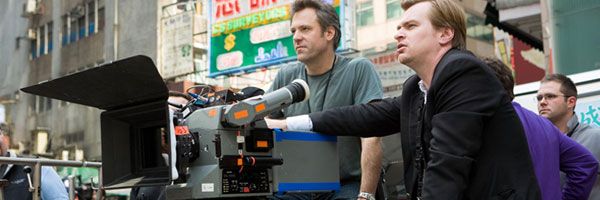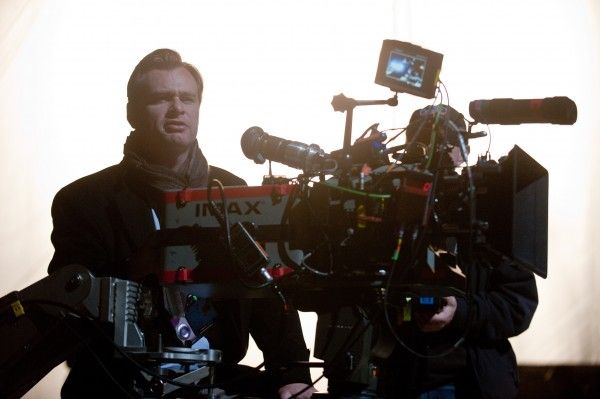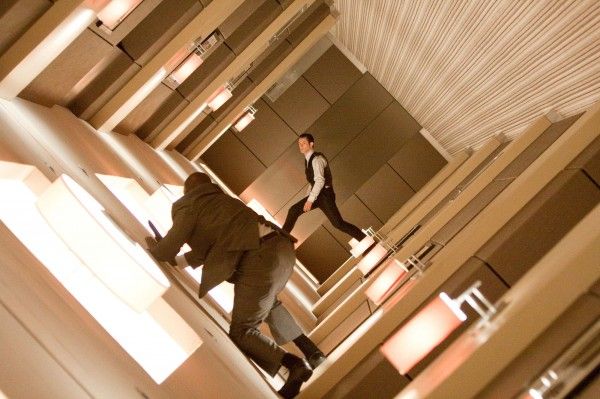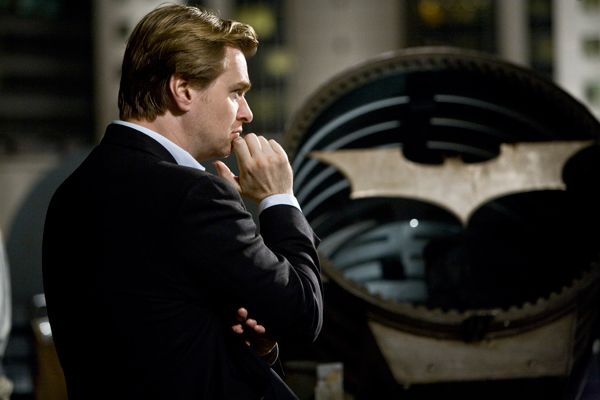It’s safe to say that the name Christopher Nolan is quite well known around these parts. He revitalized the Batman franchise with thought provoking films that didn’t settle for being standard popcorn-fare, and he made an extremely successful movie (Inception) that was based off of a wholly original screenplay instead of a board game or toy. With the impending release of the concluding chapter in his Batman trilogy, The Dark Knight Rises, Nolan recently sat down with the Directors Guild of America for an intensely in depth interview covering everything from his thoughts on 3D, to why didn't shoot Inception in IMAX, how he approaches CGI, and much, much more. Hit the jump to see what he had to say.
As Nolan is a huge advocate of shooting on film as opposed to digital, we’ll get to his thoughts, via DGA, on why he still shoots film first:
“For the last 10 years, I've felt increasing pressure to stop shooting film and start shooting video, but I've never understood why. It's cheaper to work on film, it's far better looking, it’s the technology that's been known and understood for a hundred years, and it's extremely reliable. I think, truthfully, it boils down to the economic interest of manufacturers and [a production] industry that makes more money through change rather than through maintaining the status quo.”
Given the fact that the film format is in grave danger of becoming extinct, Nolan decided to do something about it:
“I’ve kept my mouth shut about this for a long time and it’s fine that everyone has a choice, but for me the choice is in real danger of disappearing. So right before Christmas I brought some filmmakers together and showed them the prologue for The Dark Knight Rises that we shot on IMAX film, then cut from the original negative and printed. I wanted to give them a chance to see the potential, because I think IMAX is the best film format that was ever invented. It’s the gold standard and what any other technology has to match up to, but none have, in my opinion. The message I wanted to put out there was that no one is taking anyone’s digital cameras away. But if we want film to continue as an option, and someone is working on a big studio movie with the resources and the power to insist [on] film, they should say so. I felt as if I didn’t say anything, and then we started to lose that option, it would be a shame. When I look at a digitally acquired and projected image, it looks inferior against an original negative anamorphic print or an IMAX one.”
Filmmakers in attendance at the prologue screening included Edgar Wright, Joe Dante, Michael Bay, Bryan Singer, and many more, so we’ll see if Nolan’s little gathering had an effect on the directors in their subsequent films. Since he’s touted IMAX as the “gold standard” in quality filmmaking, Nolan was asked why he didn’t use the format for Inception:
“We didn’t shoot IMAX for Inception because we were trying to portray the reality of dreams rather than their extraordinary nature, so we used a handheld camera and shot it in a more spontaneous way. Whereas the operatic quality of The Dark Knight and The Dark Knight Rises felt very well suited to IMAX’s larger canvas. So it’s different depending on what film you want to do. But, in each case, as a filmmaker who’s been given sizable budgets with which to work, I feel a responsibility to the audience to be shooting with the absolute highest quality technology that I can and make the film in a way that I want.”
What Inception did include was a bevy of incredible visual effects, most of which were done with as much in-camera work as possible. As such, Nolan talked about how he approaches CGI:
“The thing with computer-generated imagery is that it’s an incredibly powerful tool for making better visual effects. But I believe in an absolute difference between animation and photography. However sophisticated your computer-generated imagery is, if it’s been created from no physical elements and you haven’t shot anything, it’s going to feel like animation. There are usually two different goals in a visual effects movie. One is to fool the audience into seeing something seamless, and that’s how I try to use it. The other is to impress the audience with the amount of money spent on the spectacle of the visual effect, and that, I have no interest in.”
After CGI and IMAX, the next topic to tackle would be 3D. Nolan admitted that Warner Bros. would have been elated if he chose to shoot The Dark Knight Rises in 3D, but he explained why he’s not the biggest fan of the format:
“Warner Bros. would have been very happy, but I said to the guys there that I wanted it to be stylistically consistent with the first two films and we were really going to push the IMAX thing to create a very high-quality image. I find stereoscopic imaging too small scale and intimate in its effect. 3-D is a misnomer. Films are 3-D. The whole point of photography is that it’s three-dimensional. The thing with stereoscopic imaging is it gives each audience member an individual perspective. It’s well suited to video games and other immersive technologies, but if you're looking for an audience experience, stereoscopic is hard to embrace. I prefer the big canvas, looking up at an enormous screen and at an image that feels larger than life. When you treat that stereoscopically, and we've tried a lot of tests, you shrink the size so the image becomes a much smaller window in front of you.”
Nolan has many more fascinating insights in the full interview, which I highly suggest you check out. He addresses why he doesn’t use a second-unit while filming, how he’s never done reshoots, and talks at length about his approach to working with actors.




